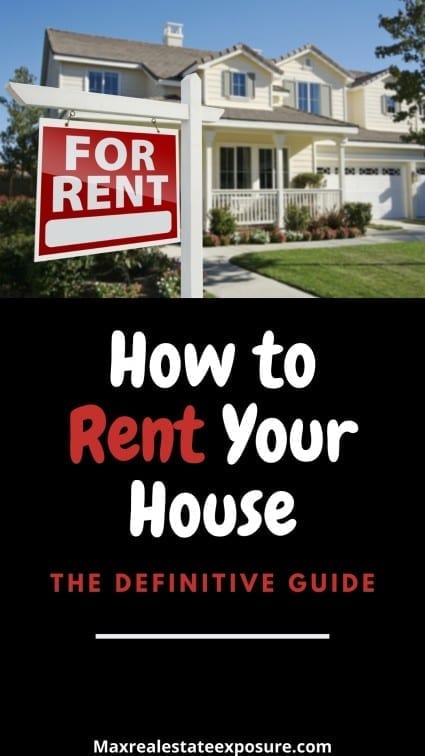Tips For Renting a Home
 Are you considering renting your home? Who says you have to sell your house when you move out of it?
Are you considering renting your home? Who says you have to sell your house when you move out of it?
Rather than take the one-time payout of selling, some outbound homeowners keep their old homes as rental properties to generate ongoing income. They enjoy tax advantages, protection against inflation, and of course, passive rental income.
Granted, it means coming up with cash savings for your down payment to buy your next house, instead of just using the proceeds from your old home. But it also means converting your home into an actual investment, rather than immediately spending your profits.
You also get to avoid seller closing costs, potentially saving you tens of thousands of dollars.
Yet the average person has no idea how to be a landlord. Renting a house can be challenging. Most people fail to understand all the costs that landlords face, which means new landlords tend to lose money.
Before converting your home into a rental property, follow these steps to ensure you actually make money, rather than losing your shirt on your first rental. Let’s dig in and explore the best tips for renting a home.
1. Calculate the Property’s Cash Flow
The first step in renting a house is finding out whether it will be profitable to do so. Your property may not make for a thriving rental at all, depending on your market conditions. You need to run the numbers before making a decision, and to understand all your expenses as a landlord.
First and foremost, get very clear on the market rent for your property. Check websites like Apartments.com, ForRent.com, Craigslist, Zillow, and other free resources to check on rental comps in your neighborhood. If you still don’t feel confident in your rent estimate, talk to other landlords and property managers who operate in the same area.
You can also seek out a local real estate agent as well who can look at comparable rental properties. They will show you what similar properties are renting for. It’s essential to understand some of the factors that can determine rental rates, including the size of the home, the number of bedrooms and baths, if there is a garage, and if there are amenities such as central air.
The area the home is located in will also play a significant role in the amount of rent you’ll be able to charge.
Next, estimate your expenses using long-term averages. These are generally expressed as a percentage of the rent; non-mortgage costs typically total around 50% of the lease amount.
Landlord expenses include:
- Vacancy rate (usually 2-8% of the rent)
- Repairs and maintenance (10-15%)
- Property management fees (10-15%, including new tenant placement fees)
- Property taxes (5-15%)
- Property insurance (5-10%)
- Rent default insurance (1-2%, optional)
- Condo or homeowners association fees (if applicable)
- Legal, accounting, travel, etc. (2-5%)
Plus, of course, the cost of your monthly mortgage.
Remember that these expenses are long-term averages. You won’t have significant repairs or vacancies every month. But you will have them, and you have to account for them in your cash flow calculations.
If you don’t like what you see, sell the property. If you do, continue to convert your property to a rental.
Understanding the properties cash flow is an essential part of renting a home!Click To Tweet2. Market the Property for Rent
 Renting a house takes some effort. Take dozens of photos, painting your property in its best light. Try pictures from different angles and wide-angle lenses to make the rooms look as large as possible. Consider hiring a professional real estate photographer to make your listing photos truly pop off the screen.
Renting a house takes some effort. Take dozens of photos, painting your property in its best light. Try pictures from different angles and wide-angle lenses to make the rooms look as large as possible. Consider hiring a professional real estate photographer to make your listing photos truly pop off the screen.
Then draft the property description to pique prospects’ curiosity. Use a combination of quick bullets and more descriptive passages to highlight the property’s best features.
Post your rental listing on multiple websites, including:
- Apartments.com
- ForRent.com
- Craigslist
- Zillow
Depending on your local market and demographics, you may also want to advertise it offline. Not all communities rely as heavily on the Internet as you and I do, so consider newspaper listings, community newsletters, and even paper flyers in local coffee shops, gyms, and supermarkets.
As calls and emails roll in, you can schedule open houses. Avoid individual showings if possible, because a shocking number of prospects don’t bother showing up to meet you.
3. Hire a Real Estate Agent Instead
If doing it yourself is not your kind of thing and would rather hire a professional to rent your home, seek out a real estate agency that does a lot of rental business. Renting homes is a lot different than selling them. There are many real estate agencies that do not even offer rental services. Even the companies that do, it’s not always a focus.
If there is a real estate company that focuses on rentals in your area, they would probably be an excellent choice.
One of the most significant advantages of using a Realtor to rent your house is the ability to be on the multiple listing service (MLS). Many renters will use the MLS and the associated sites they are affiliated with to find homes for rent that are available. The agent will also be adding your home to sites like the ones listed above, along with others than only real estate agents have access to.
How a real estate agent gets paid, a real estate commission is also different from rentals than home sales. There is no standardized fee or even how it gets paid.
Commonly the rental fee is either a month rent or a half months rent. Who pays the agent working with the tenant can also vary as well. Sometimes it is the tenant directly, and other times, it is the landlord. You should discuss this upfront with your agent.
The real estate agent you select should be well versed in renting homes. One of the most vital aspects of renting a house when built before 1978 is understanding the lead paint law. Landlords, tenants, and real estate agents all need to be well versed in dealing with known lead paint in a property.
Not having an understanding could lead to disastrous consequences, including being sued. Real Estate agents also need to follow federal guidelines for fair housing practices. When you are using a real estate agent to rent your home, they will take care of many of the things mentioned below.
4. Offer A Rent-to-Own Agreement
Another possibility you may want to consider if you don’t want to be a landlord for many years is offering rent to own to your potential tenants. For a particular segment of the market, renting to own could be a desirable feature. For you, it may be the best of both worlds if you rent the property for a year or two and then sell to your tenant.
There are pros and cons of renting to own, so make sure you understand it thoroughly before committing to it. For some owners, it will be perfect; for others, not so much.
Sometimes when renting a house in a challenging market, the rent to own scenario can be a difference-maker.
5. Collect Rental Applications & Tenant Screening Reports
When prospects express interest, collect their names and email addresses, and use them to request a rental application and tenant screening reports. Both are free for landlords, and you can require the applicant to pay for the tenant screening reports, usually instead of charging a rental application fee.
Review the rental application and screening reports carefully. Their income tells you if they can pay, and their credit history shows you if they will pay. Consider applicants with pets, but charge pet fees and pet rent accordingly.
Choose the top three candidates based on their rental applications and screening reports, and start calling up their references. Verify their income and employment. Ask to speak with their supervisor, too, to ask about their character and reliability. Call both their current and former landlords – their current landlord may lie to get rid of them, but their previous landlord has no such conflict of interest. Contact personal references as well, to get a sense of how conscientious they are as a person.
If none of them meet your criteria, keep showing the unit and collecting rental applications. It’s better to wait another month of vacancy than rent to a bad tenant who will trash your property, not bother paying rent and draw out the months-long eviction process.
6. Draft a State-Specific Lease Agreement
 Once you’ve chosen a reliable tenant, create a state-specific lease agreement online. If you are using a real estate agent to rent your house, they’ll probably provide a standard lease or tenancy at will agreement.
Once you’ve chosen a reliable tenant, create a state-specific lease agreement online. If you are using a real estate agent to rent your house, they’ll probably provide a standard lease or tenancy at will agreement.
Bear in mind laws can vary widely by state. Some states require precise language in their leases; others prohibit lease clauses standard in other states. Beyond the legal language itself, many states also require specific addenda and disclosures to be tacked onto the lease agreement.
Make sure your lease agreement covers sticking points such as who pays for which utilities and the tenant’s maintenance responsibilities. Those often include replacing the air filter every three months, mowing the grass weekly in the summer months, raking leaves in fall, shoveling snow, and maintaining fresh batteries in smoke and carbon monoxide detectors.
I also like to require tenants to install felt pads on all furniture feet in units with hardwood floors. Otherwise, you can expect massive scarring on your beautiful hardwood floors. They’re inexpensive – make it even easier on your tenants by providing them with a box.
Your lease should also cover your pet policy and guest policy. Guests often become a particular problem with single tenants, whose significant other can all but move in without your knowledge or permission.
When drafting a tenancy agreement for the first time, it will be wise to consult with a local real estate attorney. They can fill in the proverbial blanks in areas of the law where you might be fully protected.
If a tenant has a lawyer modify the lease or tenancy will agreement in any way, the changes should be run by your attorney.
When renting a house, especially for the first time, don’t cut corners when it comes to legal expenses.
7. Document Your Move-In Condition Inspection
One of the most common disputes between landlords and tenants surrounds security deposit deductions. The security deposit exists specifically to protect against damage to your property, but tenants are quick to say, “I didn’t do that – that damage was there when I moved in.”
Without evidence, the judge can only decide which person they believe more in a he-said/she-said debate. So if you want your security deposit to provide any protection whatsoever, you need to document both the move-in condition and the move-out condition. This needs to be done before the tenant drops off all of their moving boxes and other possessions.
Walkthrough with your tenant before they move in, armed with both a camera and an inspection checklist (included with good lease agreements). Turn on your camera’s timestamp and photograph every single room, including walls, floors, appliances, and fixtures. Mark all existing damage on the inspection checklist, and have your tenant sign off on it.
After they move out, repeat the process using the same form. That creates indisputable evidence of both the move-in and move-out condition of the property, so you know exactly what damage the tenant caused, and what predated them.
8. Sign the Lease Agreement & Start Collecting Rent
 Collect the full security deposit, first month’s rent, any prorated partial month’s rent, and ideally the last month’s rent before putting pen to paper and signing the lease agreement.
Collect the full security deposit, first month’s rent, any prorated partial month’s rent, and ideally the last month’s rent before putting pen to paper and signing the lease agreement.
Not that you need to use a pen and paper in today’s world. Use an e-signature to keep the process even easier.
Ideally, collect rent online for fast direct deposits into your bank account. Messing around with paper checks or large wads of cash comes with risk and headaches, and is entirely unnecessary in today’s world.
The best online rent collection services report rent payments to the credit bureaus on your behalf. That creates yet another incentive for your tenants to pay on time and in full.
Make sure your lease agreement includes a regular inspection clause, ideally quarterly or semi-annually. And then actually conduct those inspections, to look for maintenance issues, lease violations, undeclared pets or occupants, or merely the tenants not treating your property as well as they should.
9. Enforce the Lease with Prompt Evictions
Novice landlords always fail to enforce their lease agreements properly.
Their tenants call them with a sob story, explaining why they can’t pay the rent, asking for “just another week or two.” Then another week or two, then another. Meanwhile, the novice landlords keep putting off filing for eviction because they don’t want to be responsible for “putting someone out on the street.”
And because they don’t understand the eviction process. They don’t know what kind of eviction notices they need to send, at what intervals. They don’t know how to file for eviction in the local courthouse, or what to expect at the eviction hearing, or how to schedule a put-out date with the sheriff’s department.
So they procrastinate and give the defaulting tenant more and more time, allowing them to fall further behind.
The simple fact is that the eviction process takes months from start to finish. It’s designed to allow the tenant ample opportunity to correct their lease violation. By delaying your filing, you simply add to an already lengthy process.
When tenants default on your rent or otherwise violate your lease agreement, you need to serve the eviction notice immediately, wait for the mandatory waiting period, and then file in court. If you don’t think you can do that emotionally, you shouldn’t become a landlord. If you don’t know how to do that logistically, you need to find out before the need arises.
Because once your tenants breach your lease, you’ll find an excuse to procrastinate if you don’t understand the process.
10. Build Relationships with Contractors
One of the hardest parts of being a real estate investor is hiring and managing contractors.
Notoriously unreliable and unprofessional, contractors routinely show up late for work, fall behind on projects, change their pricing halfway through, and even disappear with your money mid-project. I say that having worked with hundreds of contractors over the years.
Skilled, honest, reliable, and affordable contractors are hard to find. As a landlord, you need to start building those relationships before you actually find yourself in an emergency. (And you will believe me.)
Ask around among other landlords and real estate investors for referrals. Collect at least three referrals for each of the following types of contractors:
- Affordable, well-rounded handymen for painting and low-skill general repairs
- Plumbers
- Electricians
- HVAC specialists
- Roof specialists
- Flooring specialists
- Foundation specialists
If you’ve never used a contractor before, try and start them out with a small job to see how they do with it. Gradually ramp them up to larger and larger jobs, as you build trust with them. And never be afraid to fire terrible contractors – it costs far more, in the long run, to let them finish a job badly and then have to go in and pay someone else to redo the work.
Having strong relationships with contractors is a vital part of renting out your house!Click To Tweet11. Understand What to Do If You Decide to Sell
There are times when renting a home that you finally meet your wit’s end. You’ve decided you no longer want to rent out your house anymore. It’s time to get it on the market and sell. There are still tenants in your home, so how does that work? Selling a house with tenants can be a royal pain. There are a few options you can take when tenants still reside in the home.
The best is to wait to sell until the tenants are going to be moving out. Most real estate agents will tell you just how difficult selling can be with a cranky tenant who doesn’t like the idea of the house getting shown.
Final Thoughts On Renting a House
Rental properties make an excellent source of semi-passive income. But unlike index funds or bonds, they aren’t entirely passive investments and require some labor on your part.
The overwhelming majority of that labor comes during turnovers. When we teach property management, we urge landlords to precisely screen their rental applications to look for stable, long-term tenants: the kind of person who will still live in your property five years from now.
Don’t underestimate expenses, screen tenants aggressively, conduct regular inspections, serve eviction notices immediately, and raise the rent every single year by 2-4% like clockwork. Do that, and you’ll come out ahead as a landlord.
If you don’t like the sound of any of that, then sell your house rather than keeping it as a rental, because you are simply not a good fit for being a landlord. Renting out a home is not something that should be taken lightly.
Hopefully, you have found these tips for renting a house useful!
Additional Valuable Real Estate-Media
- How much to tip a mover – are you going to be hiring a professional moving company? One of the things a lot of people ask about is whether the moving company should be provided a gratuity. The answer is yes if you feel it is warranted. In the article, get some trustworthy advice on what you should be tipping the movers.
- Moving truck rentals nearby – one of the options when moving is doing it yourself and getting your own moving truck. In the article at Maximum Real Estate Exposure, see some of the best advice for getting a moving vehicle near your location.
- How to forward mail – a task that needs to be at the top of your list when moving is changing your address with the post office and getting your mail forwarded to your new address. In this informative article, see how to go about the process with some excellent tips.
Use these additional articles to make the best real estate decisions, whether buying, selling, or renting.
 About the author: The above article on how to rent a house was written by Brian Davis. Brian is a real estate investor and co-founder of SparkRental.com, which helps everyday people build a rental income on the side of their full-time jobs.
About the author: The above article on how to rent a house was written by Brian Davis. Brian is a real estate investor and co-founder of SparkRental.com, which helps everyday people build a rental income on the side of their full-time jobs.
Spark Rental provides online landlord software covering everything from rental listings to rental applications, tenant screening reports to lease agreements, online rent collection reported to credit bureaus, and more. Connect with him through SparkRental’s website or their Facebook page; he loves hearing from readers!


Thanks for the tip that consulting real estate agents can help me gauge the price ranges of homes for rent in my area. After living together in an apartment for almost five years, I think it’s about time my husband and move out and find a larger home for us. Getting to rent a house would be ideal if would decide to make a baby someday.